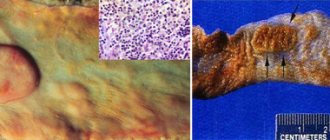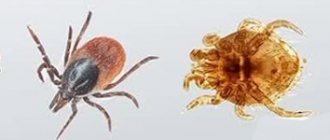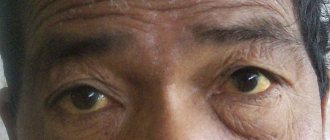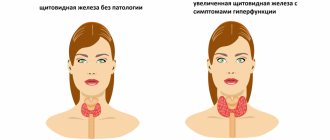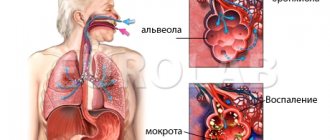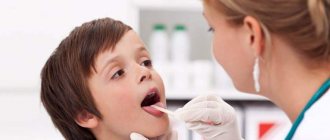Leptothrix (leptotrix, leptotrichia, leptotrichia) is a bacterium that lives in the external environment and in the human body. Microbes inhabit open natural bodies of water and live in tap water and swimming pools. In the human body, certain types of bacteria are found in the mouth and vagina.
Vaginal leptotrichosis is a bacterial vaginosis that develops when Leptotrichia enters a woman's vagina. This infection is not a sexually transmitted infection, since bacteria more often enter the female body during swimming in open water. Leptothrix is usually discovered by chance during a visit to the gynecologist. After an examination in a gynecological chair, the doctor takes a smear from the vaginal mucosa, in which the microbe is found. Most often, in such women, a mixed infection is detected in the smear: chlamydia, trichomoniasis, candidiasis. Often representatives of this group of microorganisms are found in smears for sexually transmitted diseases. Leptotrichosis develops extremely rarely in men. They are only carriers of bacteria.
Currently, leptothrix often causes inflammatory processes in the fetal membrane and amniotic fluid, spontaneous abortions, postpartum sepsis, and septic arthritis. Infection with leptotrichosis can result in premature termination of pregnancy or the development of bacteremia in newborns.
Leptothrix: features of infection
If leptothrix is detected in a vaginal smear, then a woman may have a reasonable question.
What is it and where did this infection come from? In appearance, the pathogen has a shape resembling threads.
The infection can live not only in the vagina, but also in the mouth. Because it feels good in conditions of high CO2 concentration. In addition, pathogens are often inhabitants of natural bodies of water. If leptothrix is detected in vaginal smears, the doctor should conduct an additional examination. It is necessary to identify the possible presence of other dangerous infections.
If tests for concomitant infections show a negative result, then there is nothing dangerous. The infection may go away on its own even without treatment.
The disease is often found in pregnant women. As for men, they develop the disease very rarely; more often they are carriers of the infection. The characteristics of the pathogen are such that the bacterium can exist and is even capable of reproducing under anaerobic conditions (without the presence of oxygen). Microorganisms can be inhabitants of the vagina and oral cavity of healthy people.
When living conditions change, bacteria begin to multiply rapidly and become dangerous to humans. Treatment of the disease is carried out only if infected people make any complaints. Microorganisms exhibit maximum activity in the spring and autumn.
Leptothrix: what complications to expect
Leptothrix is a disease that may not show any signs of itself for a long time.
In this case, the pathogenic microorganism will cause harm to the body, which will be extremely difficult to resolve in the future.
Any inflammatory process in the genitourinary system, first of all, negatively affects reproductive functions.
Both women and men face infertility.
Infertility is difficult to treat, especially if its cause is opportunistic microorganisms.
In addition to infertility, the patient may face:
- impotence, which can be caused by both prostate and testicular damage
- decreased libido in the fair sex, which is explained by discomfort during sexual intercourse, lack of pleasure
- damage to the child’s body if the disease is diagnosed in a woman during pregnancy
- if the oral cavity is affected, tooth decay, inflammatory diseases of the gums and oropharynx are possible
Leptothrix in women and the stronger sex is not a harmless infection that can be ignored.
Adequate therapy for exacerbation of the disease is mandatory!
Leptothrix: causes of the disease
The main route of entry of the pathogen into the body is through water. For example, while swimming in bodies of standing water or in swimming pools. In rare cases, the infection can be transmitted sexually.
Risk factors are:
- decreased immune defense of the body
- HIV infection
- the presence of an oncological process in the body
- blood diseases
- when a woman uses an IUD
Often the disease is detected in women during pregnancy during examination. For men infected with Leptothrix, infection does not pose any danger.
Forms of leptotrichosis
Considering the area of damage, in medicine the following forms of the disease are distinguished:
| Name | Description |
| Vaginal leptotrichosis | A disease that develops against the background of vaginal lesions with leptotrichia. The pathology does not apply to sexually transmitted infections; infection occurs while swimming in dirty water. Pathogenic microorganisms enter the vaginal mucosa, multiply and provoke inflammation. The anus, labia and perineum swell, and genital itching occurs. |
| Leptotrichosis in the mouth | The disease develops in the mouth and is caused by Leptothrix buccalis. The tonsils, tongue, and gums become inflamed, and the crowns of the teeth are destroyed. Oral mucosal lesions in the mouth are often detected in newborns. |
| Choriamnionitis | The pathology is characterized by infection of the walls of the fetal bladder and amniotic fluid. |
Each form of leptotrichosis is accompanied by characteristic symptoms and requires properly selected therapy. In the absence of timely treatment, pathological processes progress and cause serious complications.
Clinical manifestations of leptothrix
Infection of a person with Leptothrix may not manifest any signs, i.e. be asymptomatic.
If the pathogen is localized in the oral cavity, then symptoms may be absent. If the number of microorganisms is high, the patient may complain of a feeling of a foreign body in the pharynx. The tongue, palate and tonsils are coated with a gray coating.- When the vagina is affected by a pathogen, women often complain of the presence of foul-smelling gray discharge. When examined by a gynecologist, spots on the mucous membrane and its yellowing are revealed.
The pathogen can cause various complications. You should not hope that the disease will go away on its own without special treatment. If the following signs appear, a woman should immediately undergo examination by a gynecologist:
- presence of itching and burning sensation in the genital area
- discomfort during sexual intercourse
- change in color and structure of discharge
- the appearance of an unpleasant odor
- deterioration of general condition against the background of the above manifestations
Penetrating into the vagina, the infection causes pathological changes in the cells. An inflammatory process occurs in the tissues of the vagina and swelling of the labia, perineum and anus. The pathology is accompanied by the presence of pain and itching. Infection of the oral cavity with Leptotrichia buccalis most often occurs in very young children.
The lacunae of the tonsils are filled with white formations. In this case, inflammation of the surrounding tissues is slightly expressed or absent altogether. It is painful for the patient to swallow. Subsequently, tonsillitis and gingivitis may occur, leading to tooth decay.
Men are much less likely to suffer from pathology. This is due to the structural features of their genitals. When a pathological process occurs, the symptoms are similar to those in women. If not treated in a timely manner, urethritis may develop, which leads to cystitis and orchitis.
What is Leptothrix
This is an anaerobic microorganism that can exist and reproduce without the presence of oxygen. It multiplies especially actively under conditions of high concentrations of carbon dioxide.
Leptothrix is a transitional form between bacteria and fungi. When examined under a microscope, it looks like threads interspersed along its entire length with small dots.
The infection has the ability to affect not only the woman’s genitals. It can also develop in the oral cavity, causing severe tooth decay.
Leptothrix can enter a woman’s body through water from a natural reservoir or swimming pool, or it can also be transmitted sexually.
The detection of this infection in a smear is not yet proof of a spouse’s infidelity.
Methods for diagnosing leptothrix
Not all patients know which doctor to contact if symptoms appear. Usually women, first of all, go to a gynecologist, and the male part of the population goes to a urologist. If there are signs of damage to the oral cavity, you should contact an ENT specialist.
The bacteria are quite clearly visible under a microscope and have a thread-like structure. In this regard, specialists do not experience any particular difficulties when conducting diagnostics. If leptothrix is found in the smear, the doctor will tell you what it is and what treatment will be required. In order to confirm the diagnosis, the doctor may insist on additional studies. These methods include:
- Examination of a woman in a gynecological chair to identify the presence of vaginal infection.
- Examination of the oral cavity.
- Taking smears from the vagina, cervix in women, from the urethra in men, as well as from the pharynx in both sexes for microscopy and culture in order to identify infection and select effective treatment.
- Examination of urine by culture on nutrient media with subsequent identification of the pathogen. The presence of bacteria in quantities exceeding 105 CFU/ml indicates the presence of pathology.
- Study of venous blood using PCR.
If the smear result is positive, the biomaterial will need to be retested for the presence of STIs.
Methods of treating Leptothrix in gynecology
The choice of treatment if an infection is detected in a smear is based on the results of bacterial culture and PCR diagnostics. As a rule, patients are prescribed a course using antibacterial drugs:
- Tetracycline;
- Levomycetin;
- Clindamycin;
- Tibiral;
- Trichopolum;
- Nystatin.
In addition, therapy is used using iodine-containing drugs with a high concentration of iodine.
A prerequisite for treatment is compliance with the instructions and recommendations of the attending physician.
What drugs are used to treat mastopathy?
Are Laktozhinal suppositories effective, and when are they prescribed? Read more here.
About exocervix and endocervix: .
Leptothrix: treatment of the disease
Medicine, and, in particular, gynecology, “does not stand still.” Despite this, there is still no specific treatment for the disease.
- Antibiotics are successfully used to treat bacterial vaginosis caused by the growth of leptothrix. Since taking antibacterial agents is contraindicated for women during pregnancy, gentle treatment is most often carried out.
- Medicines are prescribed whose action is aimed at increasing immunity.
After treatment, patients are tested again. Based on their results, the effectiveness of prescribed medications is monitored. The presence of leptothrix in the body indicates that a person may have to wage a long-term fight against microorganisms.
Cases of self-healing do occur, but in very rare cases. When the immune system is able to resist disease. If the examination results are favorable and there are no other sexually transmitted infections, gentle complex therapy is carried out.
In the presence of severe symptoms of the disease, the prescription of systemic antibiotics is indicated. The most effective against this group of microorganisms are: Clindamycin, Metronidazole, Amoxicillin, Levomycetin, Erythromycin, Tetracycline. Based on the results of a study of the sensitivity of the microorganism to the action of antibacterial agents, one or another antibiotic is prescribed.- If the disease is accompanied by an inflammatory process, then anti-inflammatory drugs are prescribed.
- To relieve the symptoms of itching and burning, taking antihistamines is indicated.
- To prevent intestinal dysbiosis, Bifiform, Bifidumbacterin, Acipol, Linex and other probiotics are prescribed.
- To restore the vaginal microflora, Acylact is used.
- To prevent thrush during antibacterial therapy, antimycotics are used.
- To restore immunity, Polyoxidonium, Likopid, Imunorix, or Immunal are prescribed.
- Vaginal suppositories Betadine, Pimafucin, Hexicon, or Terzhinan are used as local therapy for leptothrix.
If the infection is accompanied by other STDs, the doctor will draw up an individual treatment regimen. It will definitely contain antibiotics.
What to do if leptothrix is found in a pregnant woman
The presence of leptothrix in a pregnant woman poses a fairly serious danger. If a pathogen is detected in the smear, it is necessary to urgently undergo testing for the presence of STIs. If the result is negative, the necessary treatment will still be carried out.
Treatment of the disease during pregnancy is carried out according to the usual regimen. But using means that do not pose a danger to the woman and her unborn child. Lack of timely treatment significantly increases the risk of developing the following pathologies on the part of the mother and fetus:
- spontaneous abortion
- development of intrauterine infection with damage to the membranes and amniotic fluid
- abnormalities in fetal development
- postpartum sepsis
- bacteremia in a newborn baby
With treatment, the likelihood of negative consequences is significantly reduced.
If leptothrix is detected in a man
This happens quite rarely. The fact is that a man’s reproductive system is designed in such a way that it can prevent infection as much as possible. If infection does occur, the disease manifests itself with the same symptoms as in women. If you have at least one of the signs, you should consult a doctor. A smear from the urethra will show the presence or absence of the pathogen, as well as the possible presence of other sexually transmitted infections.
The most common concomitant infections are trichomonas and chlamydia. If there is an infection, the doctor will prescribe treatment with antibiotics for oral and external use. If the disease is not treated, the infection will spread. This will cause negative consequences on the pelvic organs (cystitis, inflammation of the testicles).
What to do if Leptothrix threads are found in a smear?
If Leptothrix threads are detected in a smear, it is necessary to undergo additional examination:
- Submit biological material for bacterial culture . The essence of this laboratory examination is that the woman donates her urine as a biomaterial. It is placed in different nutrient media at different temperatures. This analysis makes it possible to determine the sensitivity of the infection to the action of various medications. Thanks to this, the specialist has the opportunity to choose the most effective treatment method.
- Carry out PCR diagnostics . This laboratory diagnostic method is aimed at determining the causative agent of infection. To do this, a microparticle of Leptothrix RNA or DNA is isolated from the patient’s biological material, which is quickly copied.
- Take a blood test for ELISA diagnostics . This examination method determines the presence in the woman’s blood of antibodies or antigens to the development of Leptothrix infection.
Only if the results of the above diagnostic laboratory tests are available, a specialist can make a final accurate diagnosis, as well as decide on the choice of treatment therapy.
The use of traditional medicine for leptorix
To get rid of leptotrichosis, the following folk recipes are used:
- Take one teaspoon of propolis tincture three times a day.
- Local application of tampons soaked in propolis oil.
- Ingestion and douching with a decoction of celandine.
Using essential oils for mouth rinsing and douching. They use tea tree oil, fir oil, juniper oil, lemon oil, and lavender oil. A few drops of any of the oils are dissolved in a glass of water.- Using vaginal tampons soaked in garlic juice and oil. If the process is localized in the oral cavity, chew a clove of garlic and then drink it with milk. You can use garlic tincture internally. The course of treatment is designed for a month.
- An aqueous solution of Icelandic moss is used for internal and external use.
- Taking mummy tablets and douching with an aqueous solution.
Treatment
Treatment of vaginal leptotrichosis is complex. It is carried out according to the standard scheme.
- Antimicrobial therapy consists of the use of antibiotics from the group of tetracyclines, beta-lactams, and aminoglycosides. Patients are prescribed "Penicillin", "Levomycetin", "Tetracycline", "Clindamycin", "Erythromycin", "Metronidazole". Experts prescribe this or that drug only after receiving the results of an analysis to determine the sensitivity of the isolated microorganism to antibiotics.
- Bacterial preparations - pro- and prebiotics help prevent intestinal dysbiosis. Typically used are “Linex”, “Acipol”, “Bifidumbacterin”, “Bifiform”.
- To prevent thrush, women are prescribed, together with antibiotics, to take antifungal agents - Flucostat, Fluconazole, Nystatin, Ketoconazole.
- Medicines intended to strengthen the immune system - “Immunal”, “Imunorix”, “Likopid”, “Polyoxidonium”.
- Local treatment – vaginal suppositories “Heksikon”, “Pimafucin”, “Betadine”, “Terzhinan”.
Traditional medicine used to treat leptotrichosis:
- Alcohol tincture of propolis is taken one teaspoon three times a day.
- Propolis oil is inserted into the vagina using tampons.
- Drink 2 tablespoons of celandine infusion three times a day, and also douche with it in the evenings.
- Essential oils of lavender, lemon, juniper, fir, tea tree are dissolved in a glass of warm water, douched or rinsed in the mouth.
- The garlic is peeled, crushed, the juice is squeezed out, and a gauze swab is soaked in it. Then the tampon is dipped in oil and inserted into the vagina. When the pathological process is localized in the mouth, chew the garlic and wash it down with milk. Garlic tincture is drunk in a course for a month to completely remove microbes from the body.
- Icelandic moss is poured with boiling water, left for half an hour and taken three times a day. The same solution is used for douching.
- Mumiyo in capsules is taken orally, and the solution is used for douching.
Consequences and possible complications of leptotrichosis
It is important to understand that the presence of leptothrix in tests may indicate the possibility of developing an inflammatory process provoked by an STI. A relationship has also been established between opportunistic flora and bacterial vaginosis.
It is necessary to undergo a timely examination and the necessary course of treatment. Otherwise, the inflammatory process can provoke various negative consequences. As a result, the following complications may develop:
- Infection of the fetus and membranes, if the disease is detected during pregnancy and the pathology has not been treated.
- Congenital developmental anomalies in a newborn.
- An inflammatory process of the genitals, eyes, and oral cavity in a newborn, caused by infection during the passage of the baby through the mother’s birth canal.
- Tooth decay caused by pathological changes in the enamel due to the localization of the inflammatory process in the mouth.
How to treat Leptothrix in the mouth
To treat pathology that develops in the oral cavity, both conservative and physiotherapeutic methods are used.
Conservative treatment of leptothrix in the mouth consists of taking a course of drugs that have an antibacterial effect. Among them are the following:
- Tetracycline;
- Clindimicin;
- Levomycetin;
- Metronidazole.
A course of physiotherapeutic procedures through the use of a laser or the use of dosed ultraviolet irradiation of a certain spectrum will also help to overcome the infection.
You can speed up the healing process by taking multivitamins, the action of which is aimed at strengthening the body's immune system.
Only as a result of comprehensive treatment can a rapid recovery be achieved.
Leptothrix: preventive measures
Infection of women with Leptothrix, unlike men, occurs much more easily. And the process of getting rid of the infection is quite complex and lengthy. Therefore, to avoid infection with a microorganism, it is enough to adhere to certain rules. Strict adherence to safety measures will avoid not only infection, but also possible subsequent problems. Rules to help prevent Leptothrix infection:
- Careful adherence to personal hygiene requirements.
- For drinking, use filtered tap or bottled water.
- After swimming in ponds, visiting pools, saunas, hygiene procedures are carried out.
- Carrying out hygienic procedures at least twice a day with the mandatory use of special care products for intimate areas.
- When swimming, avoid getting water into your mouth.
- Regular visits to the gynecologist to select contraceptives. If an IUD is used, it is necessary not only to remove the device in a timely manner, but also to regularly take smears.
- Get tested for STDs at least once a year.
Visit a gynecologist every six months for a routine examination and pap smears.- Be sure to visit a woman's doctor at the stage of pregnancy planning in order to be examined for the presence of dangerous infections.
- In the absence of a regular sexual partner, the use of a condom is mandatory.
- Washing your hands after every sexual intercourse.
- If the test results show the presence of infection, then you must strictly follow the doctor’s instructions and take treatment seriously.
If you follow all these rules, you can avoid infection with Leptothrix.
Also prevent re-infections.
Clinical picture: symptoms and signs
Affecting the mucous membranes of the vagina and cervix, the pathology manifests itself as a gray coating on the walls, and vaginal discharge also becomes gray. And in addition, redness, itching and burning, which intensify during sex. The female body does not show any other reactions. At least in the “non-pregnant” state and with normal immunity.
If a woman has concomitant inflammatory diseases of the pelvic organs, for example, endometritis, parametritis, salpingitis, then broader symptoms are possible. This is an increase in temperature to 39-40 degrees, headache and muscle pain, dehydration. General intoxication of the body occurs. Such symptoms appear mainly in expectant mothers when leptothrix enters their blood. The same bacterium provokes severe abdominal pain in them. The amniotic membranes are also affected. A child becomes infected with the bacteria in utero .
Back to contents
Is it possible for leptothrix to recur after a course of therapy?
As a rule, the prognosis of the disease at the stage of early diagnosis and timely treatment is favorable and ends with a complete recovery of the person. But still, some patients who have undergone treatment are concerned with the question: “Why do relapses occur?” This may be due to:
- re-infection;
- an incompletely cured disease.
It is necessary to understand that opportunistic flora is a component of the healthy microflora of the vagina. Certain unfavorable factors can promote the growth and development of opportunistic bacteria. Their increased reproduction begins, which leads to a change in the acidity of the vagina. These changes are pathological. Among these bacteria is Leptothrix.
The microorganism is not capable of provoking the development of pathological conditions. But it is a “companion” of infections that can be sexually transmitted. For this reason, it is important to further screen for STIs. In order to start their treatment on time and avoid complications.
If you suspect leptothrix, contact competent venereologists.
Classic symptoms
Leptothrix in a smear (the treatment is selected by the doctor, taking into account the diagnostic results and the individual characteristics of the patient’s body) is accompanied by pronounced clinical signs.
Considering the area affected by pathogenic bacteria, patients notice the following symptoms:
| Name | Description |
| Oral infection |
|
| Vaginal infection |
|
| Damage to the male body |
|
During the period of bearing a baby, the disease is characterized by copious liquid discharge, which constantly causes wet underwear.
If any symptoms appear, it is important to go to the hospital promptly. Diagnosis and treatment are carried out by a general practitioner and gynecologist. The specialist will conduct an examination, prescribe additional examination and select the most effective treatment, taking into account the results obtained.
Diagnostics
Diagnosis is based on a physical examination, collection of personal history and clinical picture, and laboratory tests.
In general, the diagnostic program includes the following activities:
- gynecological examination on a chair;
- microbiological examination of a smear from the throat or vagina (depending on symptoms);
- antibiotic sensitivity test;
- PCR diagnostics;
- bacteriological culture of urine.
Instrumental diagnostics are not carried out for such ailments, as they do not have diagnostic value.
Treatment of leptotrichosis
In the absence of clinical signs of the inflammatory process caused by leptothrix, no treatment is required. When severe symptoms of leptotrichosis appear, the following is prescribed:
- antibiotics from the group of aminoglycosides, beta-lactams or penicillins;
- bacterial preparations to normalize intestinal microflora (pre- and probiotics);
- antifungal drugs - to prevent the development of fungal flora during antibiotic therapy;
- immunomodulatory agents;
- vaginal suppositories with antiseptics or antibiotics.
Routes of infection
The rapid reproduction of this type of pathogenic microorganisms is extremely rarely associated with a woman’s sexual life. As a rule, leptothrix flora is detected in a smear after swimming in a pool or open water. The risk of infection increases many times over if you urinate while swimming. The possibility of bacterial penetration remains even when in contact with tap water during daily hygiene procedures.
It is worth remembering the following: even if a pathogen is detected, this does not always indicate the presence of a pathological process. But it can develop under the influence of the following factors:
- Weakening the body's defenses.
- Presence of HIV infection and sexually transmitted diseases.
- High degree of sexual activity with an intrauterine device installed.
- The presence of malignant processes in the body.
Thus, it is necessary to understand that leptothrix in a smear is a signal that serves as a reason for a thorough examination.
Causes
The provoking factors causing leptotrichosis are:
- Diseases of the immune system, incl. AIDS.
- Fungal infections, candidiasis.
- Diabetes.
- Diseases of the gastrointestinal tract.
- Diseases of the oral cavity leading to degeneration of the epithelium of the mucous membrane.
- Metabolic disorders, carbohydrate-protein metabolism.
- Lack of vitamins C and B.
- Taking certain medications (corticosteroids, antibiotics).
Insufficient oral hygiene can also provoke the development of the disease. It is especially often the cause of leptotrichosis in children.
What tests need to be taken?
The rate of bacterial growth is extremely high. Within a few days their number increases several times. It is necessary to understand that leptothrix in a smear is a result that requires additional laboratory tests. It is necessary to resubmit the biomaterial for analysis, during which the presence of concomitant infections (HIV, candida, Trichomonas, chlamydia) is confirmed or excluded. In most cases, this is enough for an accurate diagnosis. Sometimes a doctor may recommend donating urine for bacterial culture, but currently this type of research is prescribed very rarely, since cultivating leptothrix bacteria is associated with a number of difficulties.
The PCR method, the biomaterial for which is venous blood, has maximum accuracy.
The role of leptotrichia in the clinical course of seborrheic dermatitis and principles of treatment
Seborrheic dermatitis is one of the pressing problems of dermatocosmetology, as there is a constant increase in this disease, causing a significant cosmetic defect in the form of thickening of the stratum corneum, oily sheen and peeling of the skin, accompanied by itching. In recent years, the role of Leptotrichia bucalis has been shown in the occurrence of seborrheic dermatitis. Seborrheic dermatitis is based on a chronic inflammatory skin disease associated with an increase in the quantity and change in the quality of sebum with localization in those areas of the scalp and body where the sebaceous glands are developed - the scalp, eyebrows, eyelashes, naso-buccal folds, ears, behind-the-ear spaces, anterior chest area and interscapular area. When the skin of the scalp is affected, thinning and thinning of the hair is observed, very often accompanied by small flour-like or large-plate white scales. You can often see yellowish scales - crusts and hemorrhagic crusts formed as a result of scratching, when the skin of the forehead, behind-the-ear areas, and the area of the ear canals is involved in the process. Macular-erythematous elements, plaques, and papules appear on the smooth skin of the face, back, and chest. A genetic predisposition to certain metabolic characteristics and environmental influences on the development of the disease cannot be ruled out.
The leading role in the pathogenesis of seborrheic dermatitis of the scalp and dandruff is assigned to the pathogen Pityrosporum - yeast-like lipophilic fungi. These fungi are a permanent component of the microflora of healthy skin in more than 90% of the population with tropism around the sebaceous glands, because use the secretion of the sebaceous glands for their growth and development. Pityrosporum ovale or according to another classification Malassezia futur is more often found on the scalp. Pityrosporum orbiculare - on the skin of the trunk and face. Stressful situations worsen the course of seborrheic dermatitis due to changes in hormonal levels and metabolic disorders. The level of secretion and qualitative composition of sebum is determined by genetic and hormonal factors. Seborrheic dermatitis occurs more often in men than in women.
The most “problematic” category of patients are men aged 45–50 years. Obviously, this is due to hormonal imbalances in the form of decreased testosterone levels. In the overwhelming majority of such patients, we also observed liver dysfunction - from the phenomena of fatty hepatosis to minimal changes in the form of slight hyperbilirubinemia, fluctuations in the level of liver enzymes. Thus, the above reasons lead to the spread and increase in the number of previously saprophytic microorganisms and the development of foci of inflammation with disruption of the immune skin response, sebum secretion and keratinization of the epidermis.
In recent years, the interest of dermatovenerologists in anaerobic microorganisms, namely bacteria of the genus Leptothrichia and Leptothrix, has increased. According to the ninth edition of Bergey (1993), leptotrichia are assigned to the kingdom Procaryotae, division 1 Gracilicutes, family Bacteroidacea, genus Ltptotrichia, type species Leptotrichia bucalis, inhabitant of the human oral cavity. Leptotrichia look like straight or slightly curved rods with a diameter of 1.0 - 1.5 microns with pointed or rounded ends. Grammar, motionless. Two or more cells unite into septate filaments up to 200 microns thick and intertwine with each other, forming “felt”. In the micropreparation, filamentous rods consist of alternating light and dark areas, reminiscent in their structure of transverse striations (“slagbaum”).
With prolonged parasitism of leptotrichia on the mucous membranes of the oral cavity and genital organs, leptotrichosis infection leads to a general decrease in the resistance of the macroorganism, which is a trigger factor in the development of seborrheic dermatitis.
Diagnostics. Scrapings from the lesions are studied. The main criterion for diagnosing leptotrichosis lesions is the detection of the pathogen (10-15 bacteria in all fields of view) with the presence of inflammatory elements (leukocytes, histiocytes). Without the absence of inflammatory elements, it should probably be considered a bacterial carriage, which, under certain conditions of the macroorganism, can transform into a leptotrichosis infection. The tonsils, the lateral and posterior parts of the pharynx, the tongue, and the vaginal part of the cervix are mainly affected. Leptotrichosis is a pseudomycotic lesion of the oral mucosa. Objectively: a grayish-whitish coating initially appears on the mucous membrane of the oral cavity, tongue, arches of the soft palate and on the mucous membranes of the genitals, transitioning to a light brown, brown color, which cannot be easily removed with a spatula.
The diagnosis of the disease is made on the basis of characteristic clinical data and the microscopic picture of the specimen stained according to Romanovsky-Giemsa. We studied the role of leptotrichosis infection in the pathogenesis and clinical picture of seborrheic dermatitis: microscopy of leptotrichia, immunological parameters, the influence of complex treatment with immunocorrective and specific therapy on the clinical picture of seborrheic dermatitis in combination with leptotrichosis. Under our supervision in 2021 there were 49 patients with seborrheic dermatitis, in 2021 - 32.
Microscopy revealed spores and pseudomycelium of the genus Candida in scrapings from the mucous membrane of the hard palate - 29 patients, and leptotrichia with elements of inflammation from the tongue in 38 patients. Therefore, the correct interpretation of bacterioscopic preparations should be carried out, taking into account that the treatment of candidiasis and leptotrichosis is not the same. Under microscopy, the filaments of Leptothrix are often straight, do not branch, do not bud, and do not have fruiting organs. The abundance of leptothrix in all fields of vision, in combination with active exudation on the surface of leukocytes, is regarded as leptotrichosis. In patients with seborrheic dermatitis, microscopy of the tongue revealed leptotrichia. As a result of mycological studies of pathological material of the smooth skin of the face, neck, chest, back (scales in patients with seborrheic dermatitis, contents of elements), piterosporal fungi were found in 17 patients out of 39 patients with leptotrichosis. It has been established that the bulk of the studied immunological parameters in patients do not undergo significant deviations from the parameters of healthy individuals and lie within the limits of individual fluctuations, and only the phagocytic activity of neutrophils is significantly suppressed. The phagocytosis process averaged 45 + 8.7 with a norm of 58 + 7.1, the phagocytic number was 1.33 + 0.11 with a norm of 3.8 + 1.1, and the completion rate was 1.5 + 0.14 with a norm of 1.9 +0.7.
Treatment Based on the results of microscopic examinations and studies of the immune status, the clinical picture of patients with seborrheic dermatitis and leptotrichosis, complex therapy was used. For treatment, staphylococcal and combined bacteriophage were used by applying to the tongue or rinsing the mouth with 20 - 40 ml 1-2 times a day. The course of treatment is 8-10 days. Alternating applications of Betadine liquid to the tongue were carried out: bacteriophage in the morning, Betadine liquid in the evening. Immunoglobulin was administered parenterally 1-2 times a week. The course of treatment included 5 injections. All patients received specific therapy. It included the following drugs: Trichopolum 0.25, 2 tablets 2 times a day for 10 days, or Tiberal 1 tablet 2 times a day for 14 days. Patients with combined flora received antimycotic treatment. Of the 39 patients, 32 achieved clinical cure, which consisted of complete cleansing of the affected areas from plaque and elimination of subjective complaints. Erythema and inflammatory rashes on the smooth skin of the face and trunk resolved, hyperkeratosis decreased, and the feeling of itching disappeared. In 7 patients, the plaque became softer and was easily removed.
During a control microscopic examination after treatment, no leptotrichia were found in 29 patients, and single leptotrichia in 10 patients. These patients received a repeat course of specific therapy. Combinations of drugs were prescribed: miramistin, clotrimazole solution, sporobacterin, as well as thymogen, myelopid, decaris, nizoral, orungal. Metrogyl gel, 2% nizoral cream, clotrimazole, lamisil, lotion and cream “Elocom” and “Elocom-S” were used as local forms.
No relapses of the disease were detected during the observation period. Observations were carried out over time after 1, 3, 6 months. When studying the immune status over time, there is a tendency towards normalization of immunogram parameters within 3 months. Consequently, the results of the complex method of treating patients with seborrheic dermatitis and leptotrichosis that we use are quite effective and pathogenetically substantiated, which must be taken into account when choosing a method of treating these diseases.
Leptothrix during pregnancy
Leptothrix rarely causes complications during pregnancy.
Nevertheless, such cases do occur.
There is now evidence that leptotrichosis increases the risk of:
- chorioamnionitis
- spontaneous abortion
- birth of underweight children
- bacteremia of newborns
The likelihood of postpartum endometritis increases.
Immunosuppressed women may develop sepsis after childbirth.
Some of these complications develop as a result of the direct pathogenic effect of Leptothrix.
Some are associated with decreased immunity.
In this case, leptothrix is not so much a cause as a marker.
After all, the presence of this bacterium indicates that not everything is in order with the woman’s immune system.
Bacteria found during pregnancy, what to do?
Leptothrix in a smear in a woman carrying a child poses a serious danger. If it is detected, you must immediately get tested for sexually transmitted infections. But even their absence does not exclude the need for drug treatment. It is carried out according to a standard regimen, including drugs that are safe for pregnant women.
Ignoring the presence of leptothrix bacteria in a smear during pregnancy significantly increases the risk of the following negative consequences:
- miscarriage;
- intrauterine infection of the fetus;
- developmental disorders after birth.
Timely treatment reduces the likelihood of these complications to a minimum.
